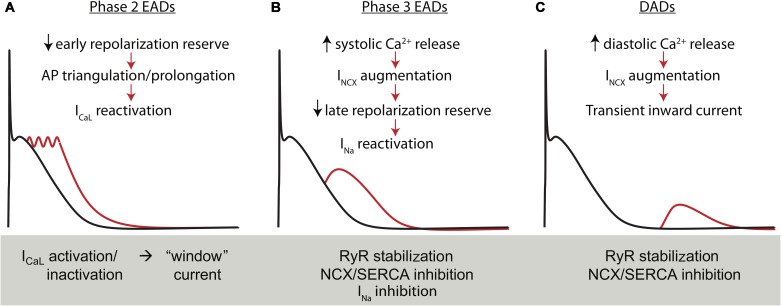FIGURE 4.
Electrophysiologic instabilities in atrial myocytes. Early afterdepolarizations in hA-CMs exhibit the same essential mechanisms as occur in ventricular cells. (A) Phase-2 EADs result from the kinetic interaction of ICaL and the outward potassium current involving multiple K+ channel species. In general, these events are uncovered during reduced repolarization reserve through ICaL potentiation or K+ channel antagonists, particularly IKr inhibitors. (B) A second class of EADs occurs when repolarization is disrupted during phase 3 by forward mode Na+-Ca2+ exchange. This additional INCX is a secondary effect of dis-coordinated or simply exaggerated ICaL-triggered SR Ca2+ release. Importantly these EADs generally recruit either ICaL or INa as the major carrier of the inward current after INCX has sufficiently slowed late repolarization. (C) Finally, INCX is also responsible for initiating DADs secondary to spontaneous SR Ca2+ release during atrial diastole. Time scale for all panels is 0–1 s and voltage range from –80 to +40 mVs.

